calsfoundation@cals.org
Arkansas Sports Hall of Fame
The Arkansas Sports Hall of Fame is a nonprofit organization dedicated to preserving the history of sports in Arkansas while honoring those who have played or coached in the state. The organization began in February 1958 when a group of prominent Arkansas businessmen began discussing the need for such an entity. On August 16, 1958, the Arkansas Sports Hall of Fame was incorporated, with Little Rock (Pulaski County) construction executive Jack Pickens as its president.
Pickens was the force behind the Hall of Fame in its early years, serving as president from 1958 to 1971. Other officers in 1958 were Milton Green as vice president, Cliff Shaw as treasurer, Warren Wood as legal counsel, and Allan Berry as secretary. The first board of directors included Arkansas secretary of state C. G. “Crip” Hall, along with sportswriters Orville Henry of the Arkansas Gazette, Jack Keady of the Arkansas Democrat, Jim Atkinson of the Pine Bluff Commercial, and Joe B. McGee of the Log Cabin Democrat in Conway (Faulkner County). During the next year, the board of directors was expanded to include John Barnhill, Ben Butler, Bud Campbell, Benny Craig, Rolfe Eldridge, Fred Giles, Carl Gary, Howard Pearce, Earl Quigley, Lee Rogers, and Ray Winder.
The board listed the organization’s objective as “the selection, recognition and acknowledgment of those persons who, through outstanding achievement and accomplishments in any form of endeavor, have brought honor, prestige and fame to the state of Arkansas.” Board members solicited more than 300 Arkansans to donate $5 each to join the organization. The response was positive, and plans were made to induct the first class of the Arkansas Sports Hall of Fame in January 1959.
Quigley, a longtime high school coach and administrator for the Little Rock School District, did meticulous research and presented the board with a list of almost 100 Arkansas sports greats. Regarding inductees, the board listed these criteria: “Selection will be based on athletic accomplishment, character and leadership, national significance of honoree, conduct during years following active participation in athletics, prestige to the Hall of Fame, representation of women, balance between old-timers and present generation, national publicity, honor and credit brought to the home state, and representation of all sports over the years.”
The first induction class consisted of Kensett (White County) baseball player Bill Dickey, who played for the New York Yankees; Jim Lee Howell, a Lonoke (Lonoke County) native who played professional football for the New York Giants; Ivan Grove, who was a coach and administrator for many years at Hendrix College in Conway; Hazel Walker, an Ashdown (Little River County) native who became one of the greatest Amateur Athletic Union (AAU) basketball players in history; and Wear Schoonover, a Pocahontas (Randolph County) native who won ten varsity letters for football, basketball, track, and baseball at the University of Arkansas (UA) in Fayetteville (Washington County).
Pickens had become acquainted with Joe Garagiola, a St. Louis, Missouri, native who had played major league baseball from 1946 to 1954 before becoming a well-known speaker and broadcaster. At the time, Garagiola was broadcasting St. Louis Cardinals baseball games on the radio. Pickens brought Garagiola to Little Rock to serve as the master of ceremonies for the first induction banquet at the Marion Hotel. Garagiola would serve in that role for nine years. More than 600 people attended the inaugural banquet.
After Pickens stepped down as the Hall of Fame president following the 1971 induction banquet, Swifton (Jackson County) native George Kell took over the organization. Kell, who had been inducted into the Hall of Fame in 1964, played major league baseball for fifteen years. He played in ten All-Star Games before retiring following the 1957 season. Kell, who owned an automobile dealership in Newport (Jackson County) and served on the Arkansas Highway Commission for ten years, was the Hall of Fame president until 1980. Jacksonville (Pulaski County) banker Kenneth Pat Wilson succeeded Kell as the organization’s president. Hall of Fame presidents now serve a single two-year term.
Dozens of people have been inducted into the Hall of Fame since 1959. Dues-paying members vote on proposed inductees from three categories: a regular category for those younger than seventy, a senior category for those ages seventy and above, and a posthumous category. The board takes those votes into consideration and then makes the final decision on who will be inducted each year.
For many years, the day-to-day work of the Hall of Fame was handled by the staff at War Memorial Stadium in Little Rock. In April 1998, the board hired Helena (Phillips County) native and former Little Rock sportscaster Ray Tucker as its first full-time executive director. Soon after that, a campaign began to fund construction of a sports museum. The capital campaign received initial gifts of $1 million from Dallas Cowboys owner Jerry Jones, a North Little Rock (Pulaski County) native, and northwest Arkansas businessman Jim Lindsey, a Forrest City (St. Francis County) native. Jones and Lindsey both had played football for UA. Little Rock attorney William H. “Buddy” Sutton, a Hope (Hempstead County) native who had played football for the Razorbacks, led the fundraising effort as chairman of the Arkansas Sports Hall of Fame Foundation.
The 13,975-square-foot Arkansas Sports Hall of Fame Museum opened in what was then Alltel Arena—later to become Verizon Arena and then Simmons Bank Arena—in downtown North Little Rock in 2007. In 2010, the Hall of Fame announced plans to add a 12,200-square-foot conference center adjacent to the museum. The conference center was designed to seat 500 for dinners and accommodate 750 people for receptions. Pulaski County received $1 million in federal funding for construction of the conference center. Hall of Fame officials then began an effort to raise matching funds. The center was to be named in honor of longtime Hall of Fame supporters Jimmie Lou Sagely and Floyd Sagely of Fort Smith (Sebastian County).
In 2012, the Hall of Fame announced a pledge of $300,000 from Southland Park Gaming and Racing at West Memphis (Crittenden County) for the conference center. Later that year, however, plans for the conference center were put on hold when the Hall of Fame began to experience financial difficulties. An audit revealed that more than $100,000 of Hall of Fame funds were missing. In December 2012, a Hall of Fame employee was fired for having misused a credit card for more than five years. In September 2013, the employee, Jennifer W. Smith, pleaded guilty to a federal fraud charge. She agreed to pay $70,000 in restitution to the Hall of Fame and was sentenced in January 2014 to a year of home detention.
In addition to its inductees, the Hall of Fame honors the recipient of the William H. “Buddy” Sutton Meritorious Service Award each year. As additional fundraising events, the Hall of Fame also sponsors an annual summer golf tournament and a fall banquet honoring a well-known Arkansan. The Arkansas Sports Hall of Fame Museum includes an eighty-eight-seat theater with a video highlighting the careers of Arkansas sports greats and a touch-screen kiosk with a database of all inductees.
For addition information:
“Arkansas Hall of Fame Will Open Doors in 1960 for 1st Set of Honorees.” Arkansas Gazette, August 17, 1958, p. 5B.
Arkansas Sports Hall of Fame. http://www.arksportshalloffame.com/ (accessed June 5, 2021).
Arkansas Sports Hall of Fame. The First 60 Years, 1958–2018. North Little Rock: Arkansas Sports Hall of Fame, 2018.
Bailey, Jim. “Fame Night: A Night to Remember.” Arkansas Gazette, January 22, 1960, p. 5B.
Rex Nelson
Arkansas’ Independent Colleges & Universities
 Barber, Miller Westford Jr.
Barber, Miller Westford Jr.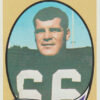 Bergey, William Earl (Bill)
Bergey, William Earl (Bill) Campbell, Leon "Muscles"
Campbell, Leon "Muscles" Carpenter, Lewis Glen (Lew)
Carpenter, Lewis Glen (Lew) Carpenter, Preston
Carpenter, Preston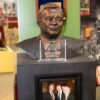 Jones, Jerry
Jones, Jerry Kennedy, Cortez
Kennedy, Cortez Malham, Michael James (Mike)
Malham, Michael James (Mike) Parker, Jimmy Dale "Red"
Parker, Jimmy Dale "Red" Recreation and Sports
Recreation and Sports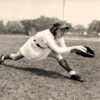 White, Delores Brumfield
White, Delores Brumfield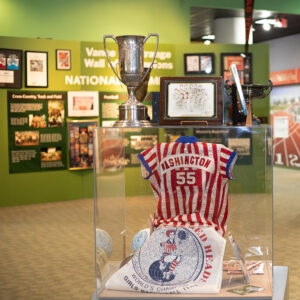 All American Red Heads Display
All American Red Heads Display  Hazel Walker's Arkansas Travelers
Hazel Walker's Arkansas Travelers 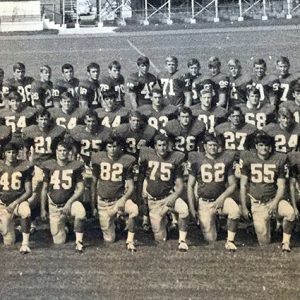 1970 ASU Football Team
1970 ASU Football Team  "Geese" Ausbie
"Geese" Ausbie  Bow Hunting Display
Bow Hunting Display  Lou Brock
Lou Brock 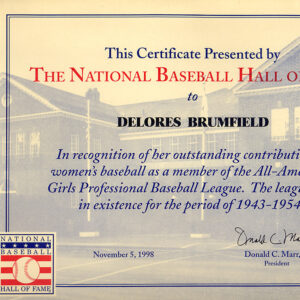 Brumfield Hall of Fame Certificate
Brumfield Hall of Fame Certificate 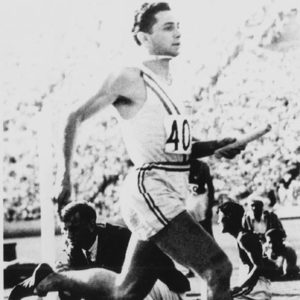 William Carr
William Carr 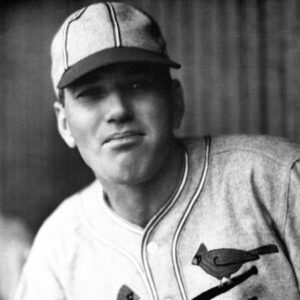 "Dizzy" Dean
"Dizzy" Dean 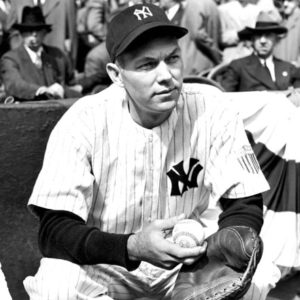 Bill Dickey
Bill Dickey  Hall of Fame Displays
Hall of Fame Displays  Hall of Fame Entrance
Hall of Fame Entrance  Hall of Fame Interior
Hall of Fame Interior 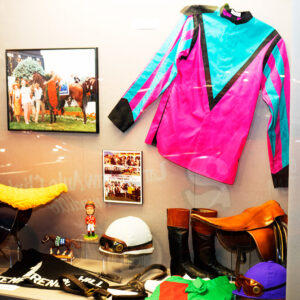 Horse Racing Display
Horse Racing Display 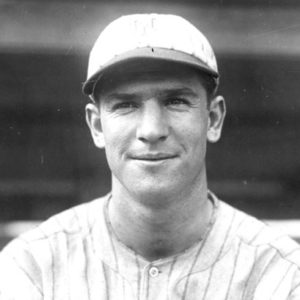 Travis Jackson
Travis Jackson 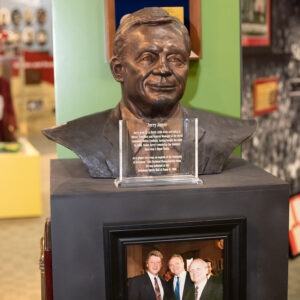 Jerry Jones Bust
Jerry Jones Bust  George Kell
George Kell 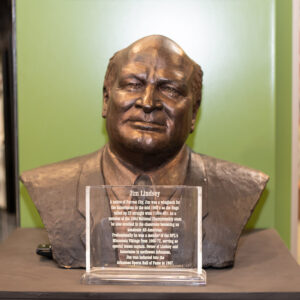 Jim Lindsey Bust
Jim Lindsey Bust 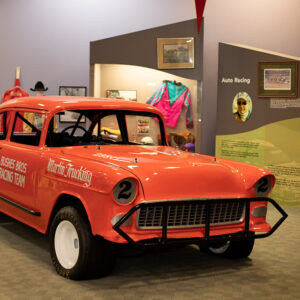 Mark Martin's Race Car
Mark Martin's Race Car 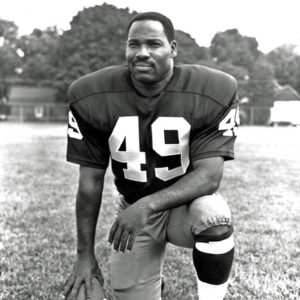 Bobby Mitchell
Bobby Mitchell 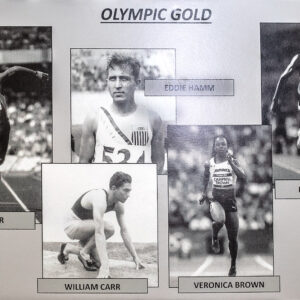 Olympic Gold
Olympic Gold  Brooks Robinson
Brooks Robinson  Brooks Robinson
Brooks Robinson  "Arky" Vaughan
"Arky" Vaughan 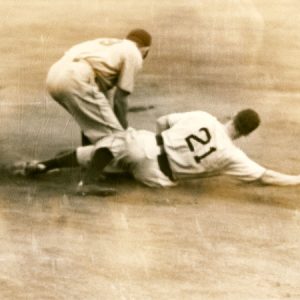 "Arky" Vaughan
"Arky" Vaughan 




Comments
No comments on this entry yet.